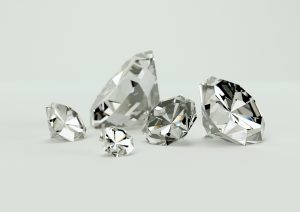
Looking for some quick cash? A pawn loan using jewelry as collateral might be a good short term
solution.
Some quick tips to make a trip to the pawn shop less painful.
Step number One- Find precious metal values (link). Try to sort your items before you go to a
pawn shop for a loan. Look over your jewelry and separate it into piles depending on there gold content
or other precious metal content. For example: Have a pile of 14kt .585 pure jewelry and another one
for 10kt .417 pure. If you have silver bullion .999 pure separate that from the silver jewelry .925 pure or
other sterling items. Then all you need is the weight of the precious metal piles and you can figure out
the approximate value. For help understanding gold, silver, platinum and other precious metal values
click on the link here.(link)
When you weight the precious metals, remember to subtract weight for any other stones or
other metals that might take away from the precious metal weight.
Once you figure out the value of the precious metal you have, you can get a rough estimate of
what a pawn shop might loan you on your jewelry. Most pawn shops loan 50%-80% of precious metal
value.
Step number Two- Find diamond and other stones value.
Diamonds are the most liquid out of the stones you will find in your jewelry, therefore we will start with
those.
Diamonds values can change a lot depending on the tradition 4’C of ( color, cut, clarity, carat
weight) If you have paperwork that can help you a lot to figure out a rough wholesale price for your
diamond. If you don’t have paperwork you will need might want to get an opinion from a jewelry store
or the pawn shop. It is fine for you to ask them what they consider the diamonds 4’C to be.
The for “C” Carat is the weight of the diamond. Most smaller diamonds that weigh .01-.20 are priced in lots so are
not priced individually.
Cut is the shape of the diamond and is also very important in pricing a diamond. The round is the most
popular and therefore the most liquid and expensive diamonds when compared to similar stones in
other shapes.
Clarity is how clear the diamond is. Simple put the less flaws inside the diamond such as carbon spots or
feathers the better the clarity and the higher the value of the diamond. A diamond with major flaws
inside will be worth a lot less then one that is flawless.
Color of a diamond is exactly what you would think it means. The whiter the diamond the more
valuable compared to a yellow diamond. There are pink and blue diamonds that are very expensive,
but not very common. Most people have white to yellow diamonds.
Diamonds are less liquid then gold so have a wider spread between where you buy them and where you
can sell them. The dealer who is going to be buying or loaning on your diamond most likely will not have
a retail buyer for that diamond immediately.
An example is if a diamond could be bought wholesale for $10,000, that same dealer might only pay
$7000-$8000 for the diamond because they will need to put it into inventory and wait for someone to
buy that exact diamond again.
Step Number Three
Add the totals to arrive at your liquid value for all the jewelry. Pawnshops usually loan or buy jewelry at
between 50%-80% of the liquid value. So if you have determined your jewelry has a liquid value of
$3500 you should expect a loan of $1750-$2400.00
